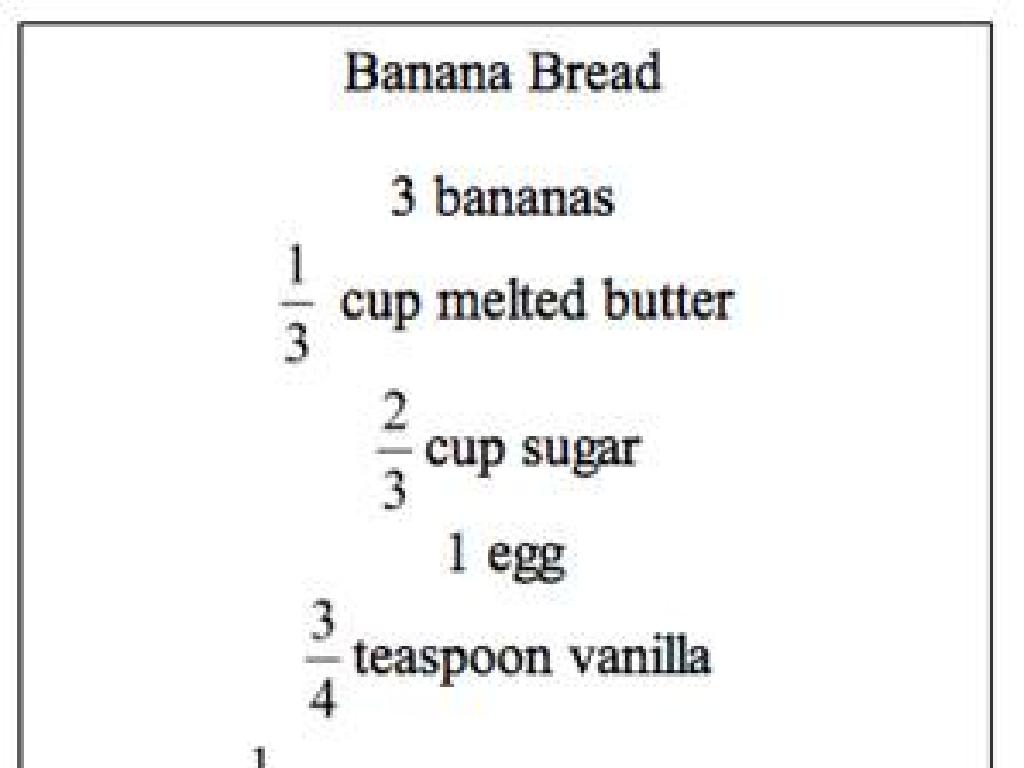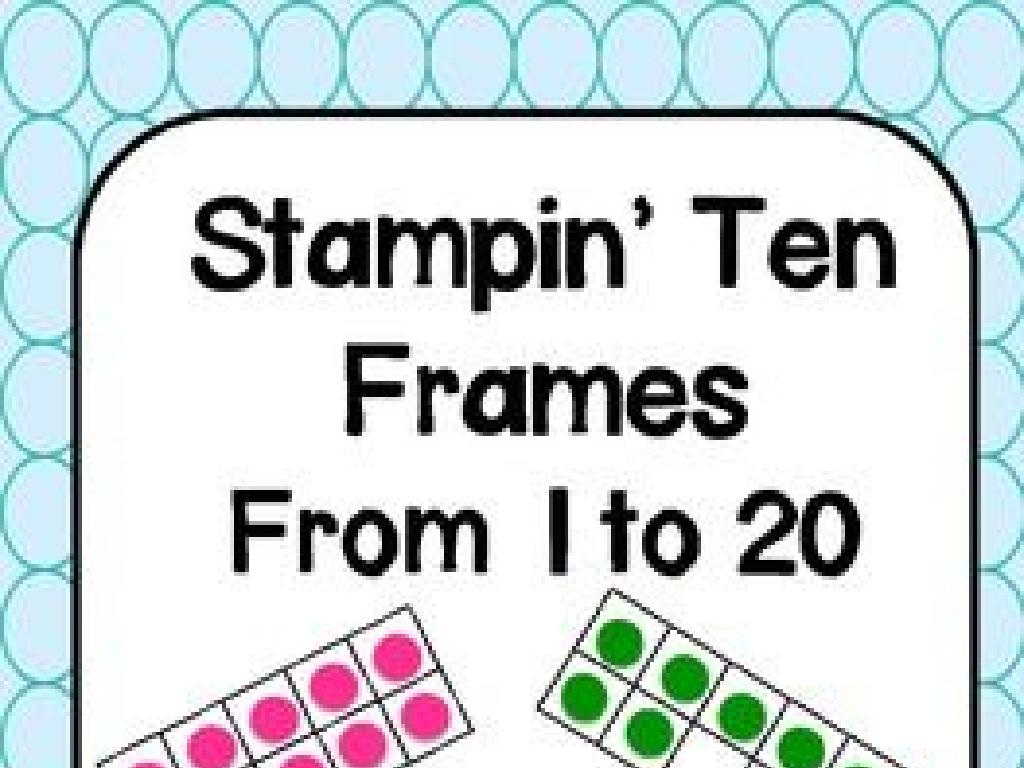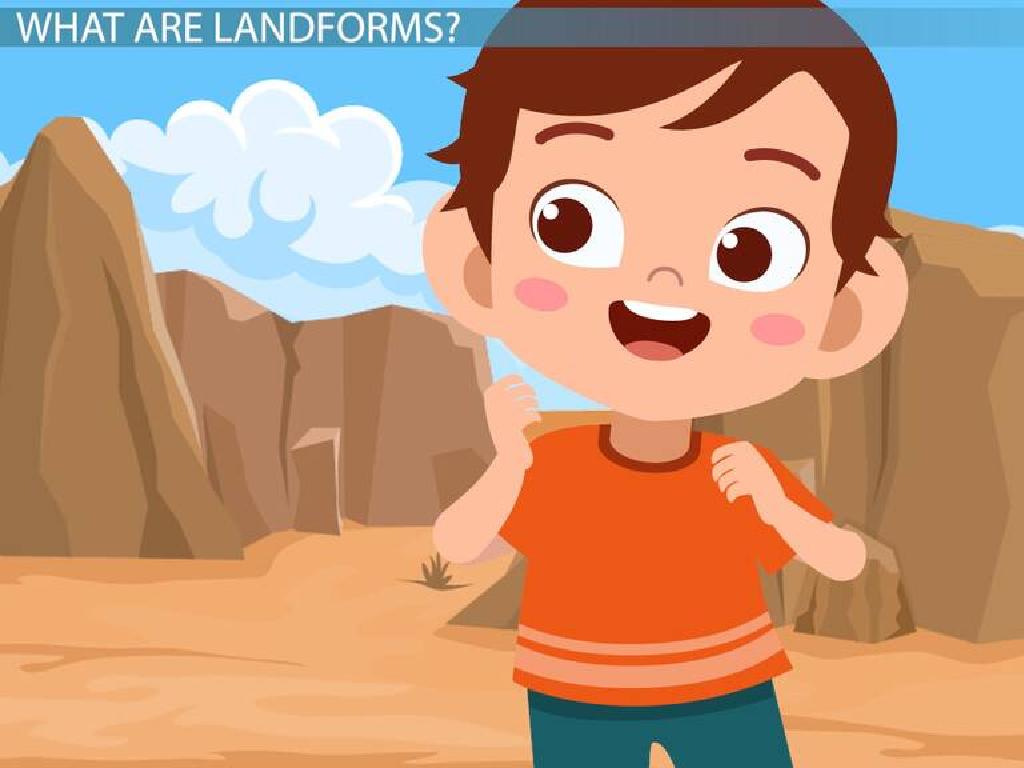Multiplication And Division Facts Up To 12: True Or False?
Subject: Math
Grade: Third grade
Topic: Mixed Operations: Multiplication And Division
Please LOG IN to download the presentation. Access is available to registered users only.
View More Content
Welcome to Mixed Operations!
– Learn to multiply and divide within 12
– Discover patterns in times tables
– Patterns help us remember, like 5 times any number ends in 0 or 5
– Division as sharing equally
– Think of division as sharing cookies with friends
– Play a true or false game with facts
– Is 9 x 3 really 27? Is 24 ÷ 6 actually 4?
|
This slide introduces third graders to the concepts of multiplication and division within the range of 12. Emphasize the importance of understanding these operations as building blocks for more complex math. Highlight the patterns in multiplication tables, such as the pattern for multiples of 5, to make it easier for students to remember. Explain division in a relatable way by comparing it to sharing items equally among a group. Engage the class with a true or false game where they will apply their knowledge to confirm or debunk multiplication and division facts. This interactive approach will help solidify their understanding and make learning fun.
Understanding Multiplication
– Multiplication as repeated addition
Adding the same number many times
– Example: 3 x 4
Same as 4 + 4 + 4
– Visualize with objects
Use items like blocks to count
– True or False practice
Is 3 x 4 the same as 12?
|
This slide introduces the concept of multiplication to third-grade students by relating it to the more familiar operation of addition. Start by explaining that multiplication is a shortcut for adding the same number multiple times. Use the example 3 x 4 to show that it’s the same as adding 4 three times. Encourage students to visualize multiplication by using objects such as blocks or counters to represent the numbers being multiplied. Conclude with a true or false activity where students apply their understanding to verify multiplication facts up to 12. This interactive approach helps solidify their comprehension of multiplication as repeated addition.
Understanding Division
– Division: Splitting into equal parts
– Division is sharing equally among a number
– Example: 12 ÷ 4 is like 4 groups of 3
– 12 items divided into 4 groups gives 3 items per group
– True or False: 12 ÷ 4 = 3
– Is the statement ’12 divided by 4 equals 3′ correct?
– Division is the opposite of multiplication
– If 4 x 3 = 12, then 12 ÷ 4 = 3
|
This slide introduces the concept of division to third-grade students by explaining it as the process of splitting a number into equal parts or groups. Use the example of dividing 12 items into 4 groups to illustrate this concept, and confirm the understanding by asking if the statement ’12 ÷ 4 = 3′ is true or false. Emphasize that division is the inverse operation of multiplication, which they may already be familiar with. Encourage students to think of division as a way of sharing things equally and to use multiplication facts they know to check their division answers.
Mastering Multiplication Facts
– Memorization speeds up problem-solving
– Explore the multiplication table
– We’ll review the table to help remember the facts
– Practice with multiplication facts up to 12
– Use flashcards and games for practice
– True or False activity
– Determine if given statements are true or false
|
This slide is aimed at reinforcing the importance of memorizing multiplication facts for quick problem-solving. Introduce the multiplication table up to 12 as a tool for reference and memorization. Engage the students with interactive activities such as flashcards and multiplication games to make learning fun and effective. Conclude with a ‘True or False’ activity where students will apply their knowledge to validate multiplication statements, fostering critical thinking and recall skills. Encourage students to practice regularly at home and provide tips for memorization, such as repeating facts aloud or writing them down multiple times.
Mastering Division Facts
– Division facts are key in math
– Multiplication helps with division
– If you know 4 x 2 = 8, then you know 8 ÷ 4 = 2
– True or False: 8 ÷ 4 = 2
– Is this division fact correct? Think about what you know about multiplication.
– Practice makes perfect
– The more you practice, the better you’ll get at knowing these facts quickly!
|
This slide emphasizes the importance of understanding division facts up to 12 for third-grade students. It’s crucial to highlight the relationship between multiplication and division, showing how mastery of one can aid in understanding the other. For example, if students are familiar with the multiplication fact that 4 times 2 equals 8, they can easily recognize that 8 divided by 4 equals 2. Encourage students to practice both multiplication and division facts regularly to build their fluency. Use true or false questions to engage the class and assess their understanding. Provide additional practice problems and encourage students to create their own true or false division facts as a fun activity.
True or False Math Game
– Listen to the math fact
– Choose ‘true’ or ‘false’ card
– Decide if the statement is correct
– Show your card quickly
– Let’s test our math skills!
– Are you ready to have some fun with math?
|
This slide introduces a True or False game to help students practice their multiplication and division facts up to 12. The teacher will read out a math fact, and students will hold up a ‘true’ or ‘false’ card to indicate their answer. This activity encourages quick thinking and reinforces the students’ knowledge of basic math operations. For the teacher: Prepare ‘true’ and ‘false’ cards in advance for each student. Read the facts clearly and give students a moment to think before showing their cards. After revealing the cards, discuss why the fact is true or false to solidify understanding. Possible variations of the game could include having students write their own true or false facts, working in pairs, or keeping score for a friendly competition.
True or False: Multiplication & Division Facts
– Is 7 x 5 = 35 correct?
– Yes, because 7 groups of 5 make 35
– Does 16 ÷ 4 equal 3?
– No, because 16 divided by 4 is actually 4
– Understanding why statements are true
– Practice with more examples
– Try 8 x 6 and 18 ÷ 3 to test your skills
|
This slide is aimed at helping students practice and verify multiplication and division facts up to 12. Start by presenting the two examples and ask the class to determine if they are true or false. For the first example, explain that multiplying is like adding a number (5) a certain number of times (7), which in this case equals 35. For the second example, show that division is splitting a number (16) into equal parts (4), which should result in 4, not 3. Encourage students to explain their reasoning for each answer. After discussing these examples, provide additional problems for the students to solve independently or in small groups to reinforce their understanding.
True or False: Multiplication & Division Facts
– Create true or false questions
– Exchange questions with another group
– Answer the swapped questions
– Class review of answers
– We’ll discuss why answers are true or false
|
This class activity is designed to engage students in creating and solving true or false questions based on multiplication and division facts up to 12. Divide the class into small groups and provide them with guidelines on how to create factual and tricky questions. Once the groups have created their questions, instruct them to swap their questions with another group for answering. This peer-to-peer interaction will help reinforce their understanding of the concepts. After the activity, bring the class together to review the answers. Discuss why each answer is true or false, and clarify any misconceptions. This will also be an opportunity to highlight common errors and strategies for solving similar problems. Possible activities for different groups could include focusing on specific number sets, using visual aids, or incorporating word problems.
Wrapping Up: Multiplication & Division Facts
– Congratulations on learning facts!
– Practice is key – continue at home
– Try using flashcards or math games
– More mixed operations coming up!
– We’ll explore more challenging problems
– Keep up the great work!
|
This slide is meant to congratulate the students on their hard work learning multiplication and division facts up to 12. Emphasize the importance of continued practice to reinforce their skills, suggesting engaging methods like flashcards or interactive math games. Highlight the excitement of upcoming lessons where they will delve into more complex mixed operations. Encourage them to keep up the great work and remind them that mastery comes with practice. Prepare to provide take-home materials or resources for additional practice.






